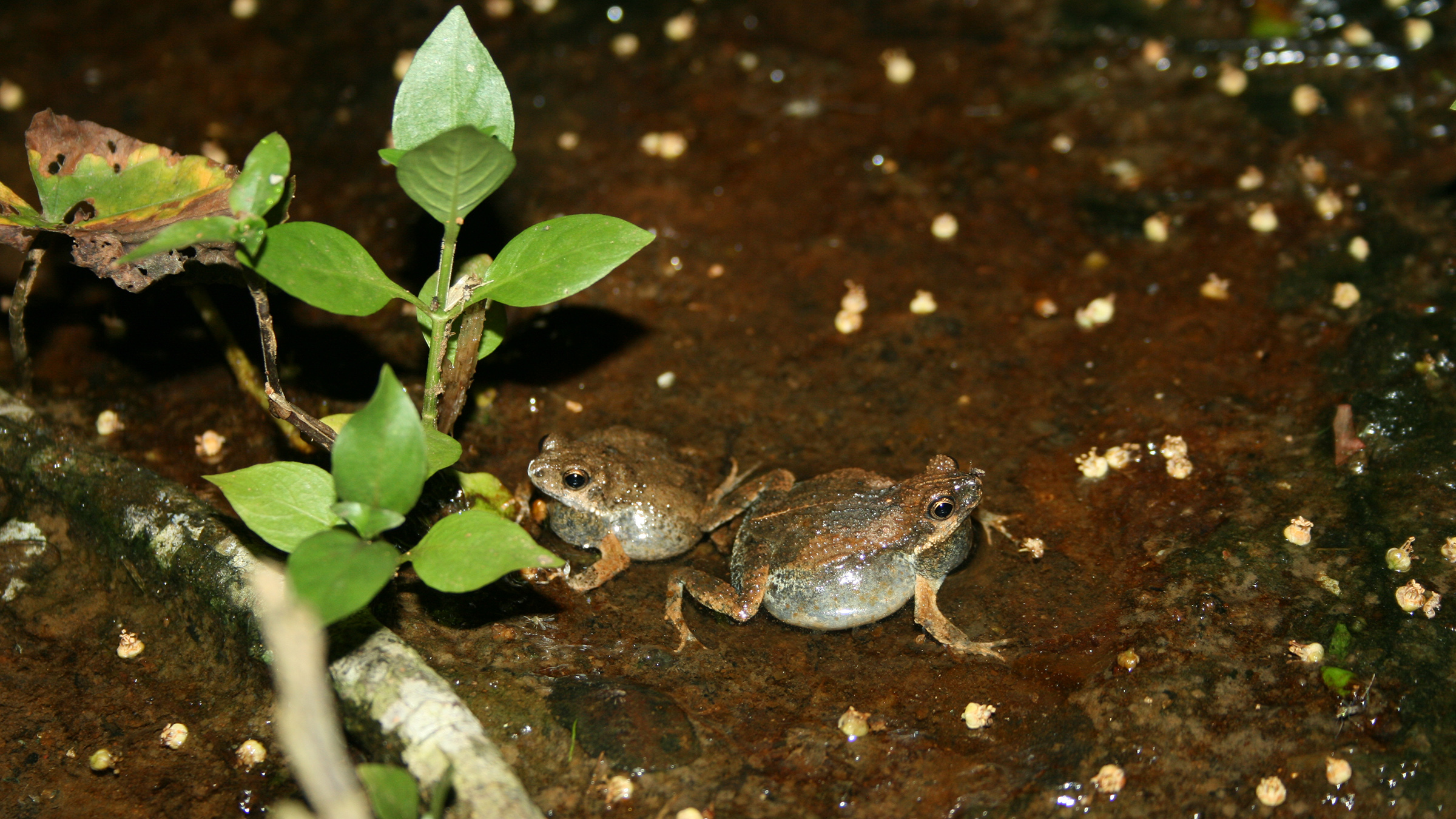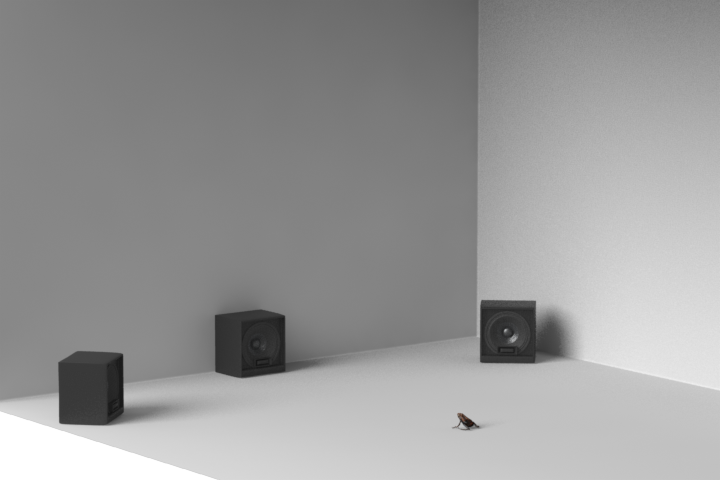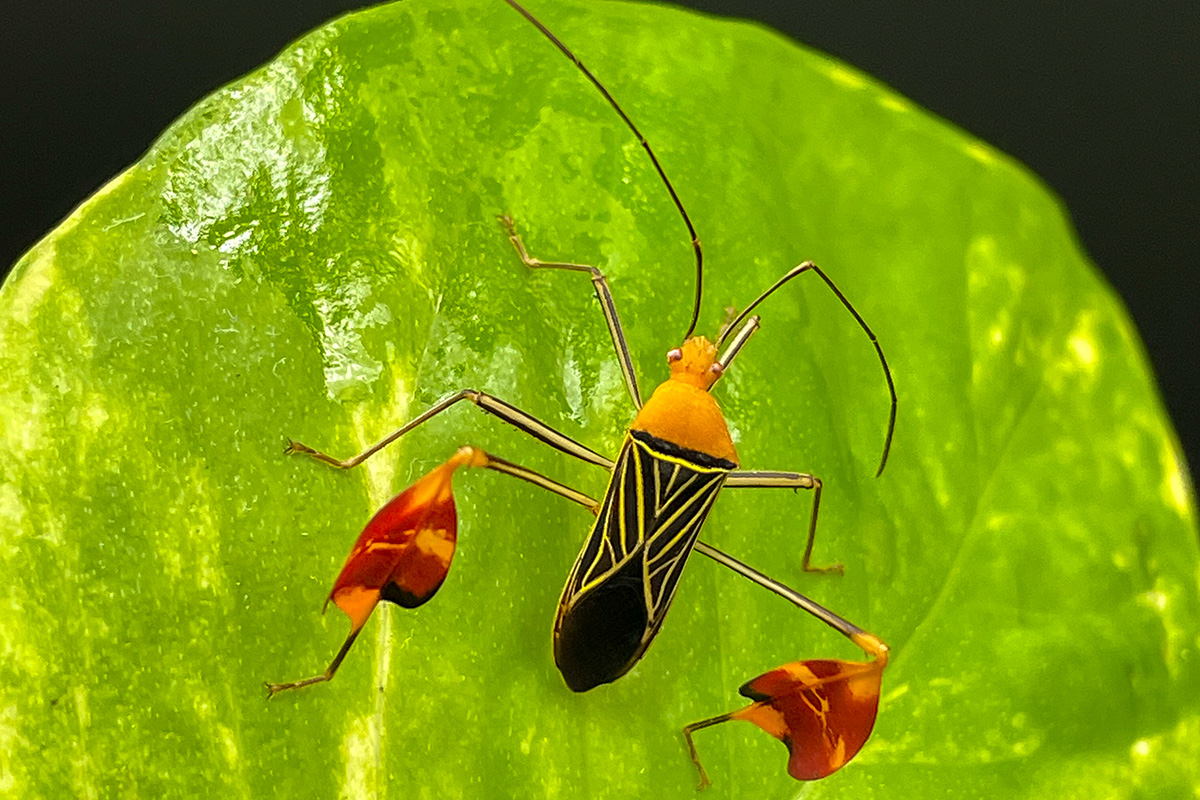Froggy Went a Courtin'
A graduate student and her advisor in the Department of Integrative Biology at UT Austin have discovered that female frogs are also prone to the decoy effect.

Two male túngara frogs make mating calls to attract females. Image by Amanda Lea.
Marketers and used car salesmen have long exploited a vulnerability in the way we make decisions, called the decoy effect, to get us to buy a certain product, even if our gut instinct is to buy another. Now a graduate student and her advisor in the Department of Integrative Biology have discovered that female frogs are prone to this same kind of irrational behavior when it comes to choosing a mate.
Imagine you're shopping for a used car and you want both a low price and good fuel efficiency. The salesman shows you a car (A) that has a high price and good fuel efficiency and a second car (B) with low price but poor fuel efficiency. You decide you'll just go with the cheaper car (B) because price is more important to you than fuel efficiency. But wait! He says, let me show you just one more car. That car (C) has good fuel efficiency but is much more expensive than the first two cars he's shown you.
Believe it or not, having this extra option causes a significant number of consumers to switch from the cheaper option (B) to the more expensive option (A). That's called the decoy effect. In this example, the decoy is car C. Advertisers use this same trick when deciding which ads should go where on a website. Retailers use it when deciding which products to sell and how to price them.
To study how female túngara frogs choose a mate, graduate student Amanda Lea placed them in a dark, soundproof room and played them mating calls of male túngara frogs from various speakers arranged around the room. Using an infrared video camera, she could see when a female frog hopped or walked up close to a speaker imitating a male's call—which is how they signal to real males in the wild that they've chosen them as a mate. Her advisor Mike Ryan and his colleagues previously characterized the qualities that make a male's call most attractive to females, including pitch, speed and length of individual notes. When the choice is between two males, a female is pretty predictable about her choice.
Lea found that, just as in the example of a person buying a car, if a decoy is present, the female switches her choice about a third of the time. She says in both frogs and people, it's still not clear why the decoy effect works.
"Maybe it's a way of simplifying decisions when you're presented with a complex scenario and too much information to process," says Lea. Because frogs are under tremendous pressure from predators, females have to choose a mate quickly and they sometimes have to choose from many possible males.
"Mating is a gamble," says Lea. "Maybe by following simple rules like 'avoid the extreme option,' you'll do better than choosing randomly."
Next, Lea plans to explore the question of whether or not male túngara frogs actively take advantage of the decoy effect to boost their chances with the lady frogs.
Funding for this research was provided by the National Science Foundation.
Lea is the first author of a paper describing the results in this week's journal Science. Read the paper "Irrationality in mate choice revealed by túngara frogs" (Science, 28 Aug. 2015)

A female túngara frog listens to the calls of three male frogs produced by speakers. She chooses her "mate" by hopping toward a speaker. Image by Amanda Lea.



